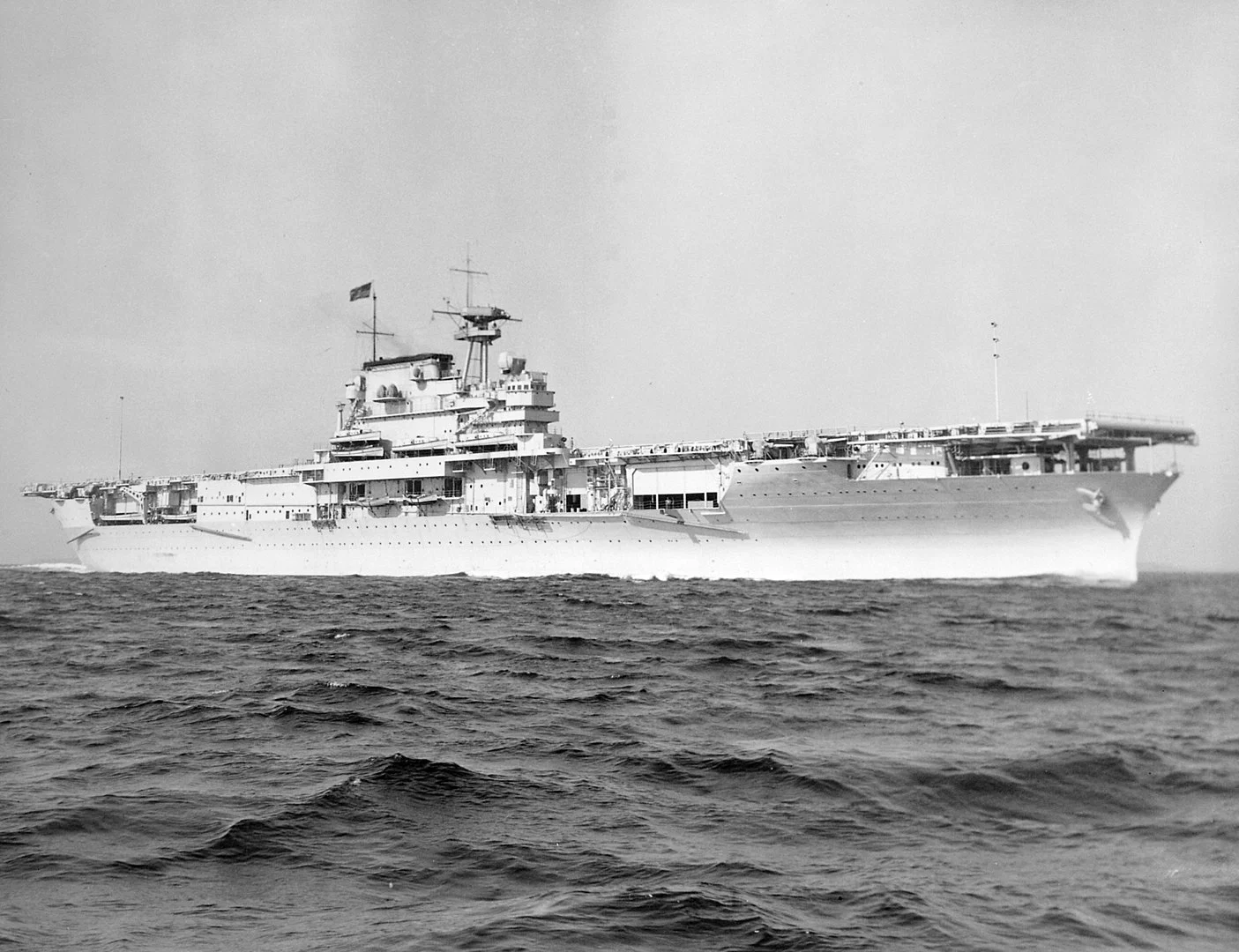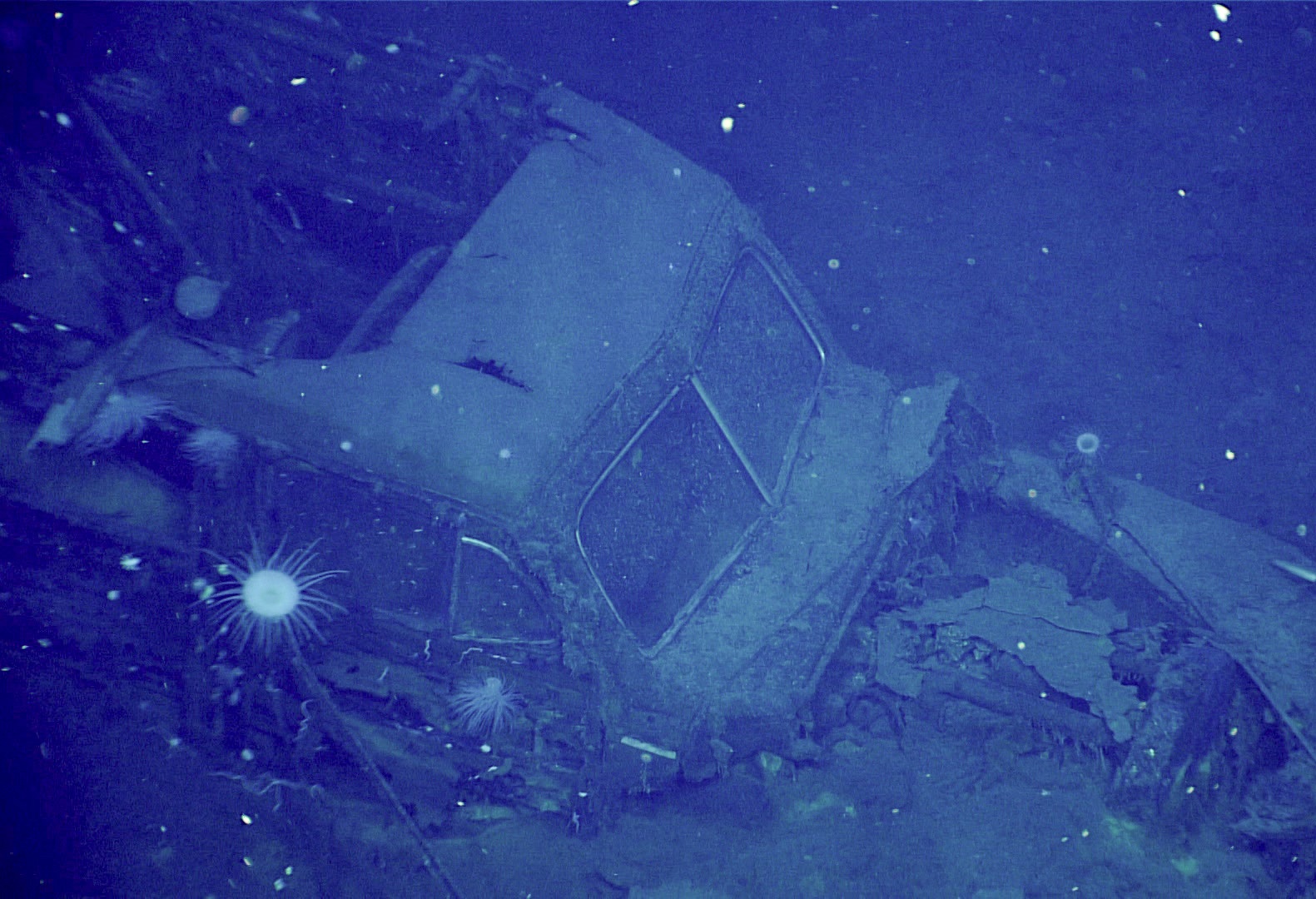During a recent expedition aboard NOAA Ship Okeanos Explorer for the Papahānaumokuākea ROV and Mapping project, NOAA Ocean Exploration and its partners discovered a 1940s Ford Woody on the wreck of the USS Yorktown.
The USS Yorktown (CV-5) was a U.S. Navy aircraft carrier that served in the early battles of the Pacific theatre during WWII. Named after the Battle of Yorktown in 1781, she was the lead ship in the Yorktown class with a displacement of 25,500 long tons.
Following the attack on Pearl Harbor in December 1941, Yorktown quickly became a front-line vessel and was involved in the first military engagement between aircraft carriers at the Battle of the Coral Sea.
At Midway in June 1942, Yorktown’s aircraft played a pivotal role in crippling two Japanese fleet carriers. Although crippled herself from the battle, Yorktown wouldn’t succumb until days later when she was torpedoed by the Japanese submarine I-168.
The wreck of the Yorktown was discovered in 1998 by oceanographer Dr. Robert Ballard, lying upright and astonishingly well-preserved three miles beneath the surface.

During a recent survey using a remotely operated vehicle (ROV), the remains of a well-preserved 1940-41 Ford Super Deluxe ‘Woody’ was discovered at the wreck site on the aft hangar deck.
Manufactured by Ford, the Super Deluxe had several amenities of higher quality over the base models, including more chrome, leather seats, and a wood-grain dashboard – not the stripped-down C11 military version commonly used by the armed forces.
How the car came to be on a front-line aircraft carrier during wartime is somewhat of a mystery. Furthermore, why wasn’t the car thrown overboard along with damaged aircraft and guns during the frantic effort to save the ship?
According to NOAA Ocean Exploration: “With “SHIP SERVICE ___ NAVY” written on part of its front plate, this car is hypothesised to have been used for Rear Admiral Frank Jack Fletcher, Captain Elliott Buckmaster, or other ship crew while USS Yorktown was conducting business in foreign ports.”
The survey also identified the wreckage of a Douglas SBD Dauntless dive bomber with legible markings “B5” on the fuselage beneath the gunner’s ring mount. The bomber is one of the two battle-damaged planes from USS Enterprise’s Bombing Squadron Six that landed aboard Yorktown following their successful attack on the Japanese carrier Kaga.
Header Image Credit : NOAA Ocean Exploration
Sources : NOAA Ocean Exploration





